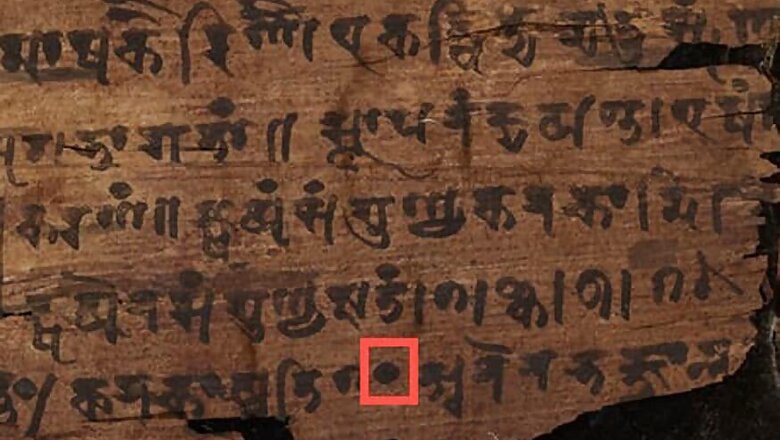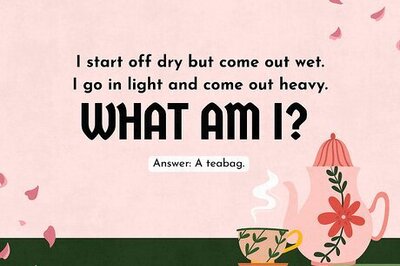
views
London: An ancient Indian manuscript, dating back to the third century, has revealed the oldest recorded use of 'zero' - pushing back one of the greatest breakthroughs in the history of mathematics back by over 500 years, Oxford scientists say.
Bakhshali manuscript was found in 1881, buried in a field in what was then an Indian village called Bakhshali, now in Pakistan. It has been at the Bodleian Libraries in the UK since 1902.
Researchers at University of Oxford in the UK used carbon dating to trace the origins of zero to the Bakhshali manuscript.
They found that the text contained hundreds of zeroes, putting the birth of 'zero' or 'nought' as it is also known, at 500 years earlier than scholars first thought.
The text dates back to the third or fourth century, making it the oldest recorded use of the symbol.
Previous studies asserted that the Bakhshali manuscript probably dated from between the 8th and the 12th century.
However, new carbon dating reveals that the reason why it was previously so difficult for scholars to pinpoint the Bakhshali manuscript's date is because the manuscript, which consists of 70 fragile leaves of birch bark, is in fact composed of material from at least three different periods.
"Determining the date of the Bakhshali manuscript is of vital importance to the history of mathematics and the study of early South Asian culture," said Richard Ovenden from Bodleian Libraries.
The concept of the symbol as we know and use today, began as a simple dot, which was widely used as a 'placeholder' to represent orders of magnitude in the ancient Indian numbers system for example 10s, 100s and 1000s, researchers said.
It features prominently in the Bakhshali manuscript, which is widely acknowledged as the oldest Indian mathematical text, they said.
The earliest recorded example of the use of zero was previously believed to be a 9th century inscription of the symbol on the wall of a temple in Gwalior, Madhya Pradesh.
Although a number of ancient cultures including the ancient Mayans and Babylonians also used the zero placeholder, the dot's use in the Bakhshali manuscript is the one that ultimately evolved into the symbol that we use today, researchers said.
"The creation of zero as a number in its own right, which evolved from the placeholder dot symbol found in the Bakhshali manuscript, was one of the greatest breakthroughs in the history of mathematics," said Marcus du Sautoy, Professor of Mathematics at the University of Oxford.
"We now know that it was as early as the 3rd century that mathematicians in India planted the seed of the idea that would later become so fundamental to the modern world. The findings show how vibrant mathematics have been in the Indian sub-continent for centuries," du Sautoy added.



















Comments
0 comment